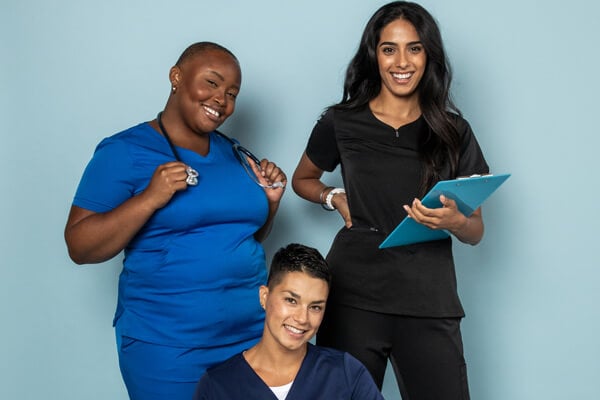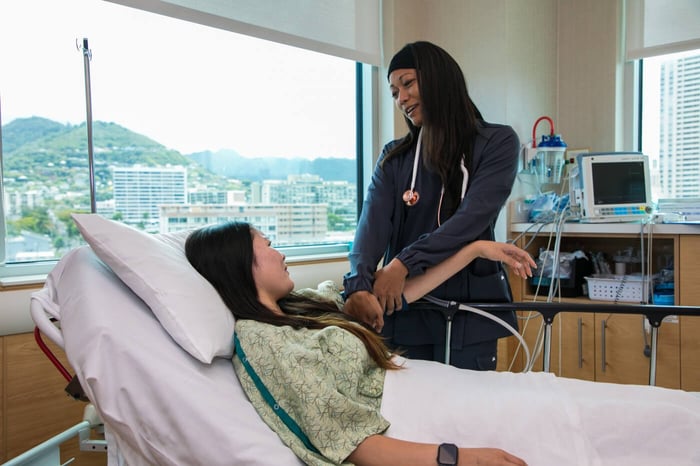LGBTQ Literacy for Nurses: Forms to Facility
Written by Morganne Skinner, BSN, RN
Did you know that approximately 1.6 million people in the U.S. identify with a gender they were not assigned at birth? And that one-third of transgender people are refused medical care, simply because they are transgender?
Many LGBTQ patients have experienced medical trauma, such as discrimination and delayed care from providers, lack of insurance coverage for transition services, and being labeled a “difficult” patient.
As nurses, we have a duty and ethical obligation to advocate for our patients. Failing to do so is discrimination. It may be easier to speak up about obvious violence or negligence against gender non-conforming people, but how do we handle microaggressions and systemic discriminations that our transgender patients face?
In this blog, I’ll share some simple steps we can all take to make our healthcare environment inclusive, starting today.
1. Registration Form
Gender: Have you ever noticed that most medical forms only have two options for gender, man or woman? Where does that leave patients who don’t identify as a man or woman? Offering only two options sets many up to be misgendered in medical spaces, which can have dangerous health consequences.
Here are some options to add:
-
Transgender Man
-
Transgender Woman
-
Gender Queer
-
Nonbinary
-
Additional Category:____________
-
Prefer not to answer
The “additional category” option empowers patients to list their identity, whether or not it is listed specifically.
“Prefer not to answer” is a simple phrase with a powerful message. Some patients may feel uncomfortable sharing their identity due to a long history of discrimination and violence, or any other personal reason. Establish safety by letting patients know it is totally okay for them to share what they want to, and nothing more.
Sexual Orientation: Many medical forms do not contain a space for patients to discuss their sexual orientation. By adding a section to a registration form, with appropriate options, we send the message to LGBTQ patients that we wish to serve them. We challenge you to mix up the order.
For example:
-
Lesbian
-
Gay
-
Straight
-
Bisexual
-
Pansexual
-
Asexual
-
Other:____________
Similar to gender options, by adding “other,” patients are free to provide accurate information.
2. Use of Pronouns
All of our registration forms, paperwork, and charts should have a space for pronouns.
As nurses, we should begin our introductions to our patients by providing them with our pronouns, and asking for theirs. For example, I may say, “Hi! I am Morganne and I’ll be your nurse today. My pronouns are she and her.” Then, ask which pronouns your patients prefer. In my experience, patients are happy to answer.
3. Gender Neutral Bathrooms
Transgender and gender queer patients may feel uncomfortable choosing a restroom. We can remove that burden by removing the gender-label from our bathrooms. It’s an easy fix– rather than marking one as “Women” and one as “Men”, simply label them, “Restroom.” Our patients are already nervous enough to be seeing a doctor, let’s not add stress to it.
4. Create A Welcoming Waiting Room
Our healthcare environment sends subtle cues that we belong or don’t belong. Attention to a few simple details can make a world of difference for your patients.
-
Office Design and Decor. Decorate your office with photographs that represent our LGBTQ patients. For example, we can include rainbows in waiting room artwork and photographs of same-sex couples and families. A sign indicating that the office is a safe, welcoming space also helps tremendously.
-
Waiting Room Reading Materials. Make sure doctor’s office waiting rooms have magazines for all genders, and children’s books that reflect many types of families.
-
Brochures and Educational Materials. Take the time to find or create inclusive medical education materials. For example, select a patient brochure that discusses breast cancer as a concern for all patients with breasts, not as a strictly women’s health issue.
All of these LGBTQ Literacy for Nurses tips, you can help you provide a more inclusive, welcoming, and nurturing environment for your patients while improving their health outcomes. While we cannot redecorate a waiting room without approval, we can definitely share our ideas with supervisors.
And, we can change how we talk to our patients right away. You can reduce stigma on all fronts by normalizing conversations, acknowledging lived experiences, and making your facility one in which our patients want to receive care!
References:
https://ajph.aphapublications.org/doi/10.2105/AJPH.2016.303578
https://www.lgbtqiahealtheducation.org/wp-content/uploads/2017/08/Forms-and-Policy-Brief.pdf
https://www.tandfonline.com/doi/abs/10.1080/00981389.2016.1193099?journalCode=wshc20
https://psycnet.apa.org/doiLanding?doi=10.1037%2Fsah0000070
About the Author:

Morganne Skinner, BSN, RN is a registered nurse, freelance nurse writer, and fertility awareness educator. She is the owner of the fertility awareness business Fertility Defined. She has seven years of nursing experience in rehabilitation, communicable disease, maternal child health, and in the surgical-trauma ICU. She served as a Peace Corps Volunteer for two years in rural Zambia, where her passion for public health and women’s health grew. She specializes writing on topics such as health literacy, cultural communication, fertility, and women’s health.




